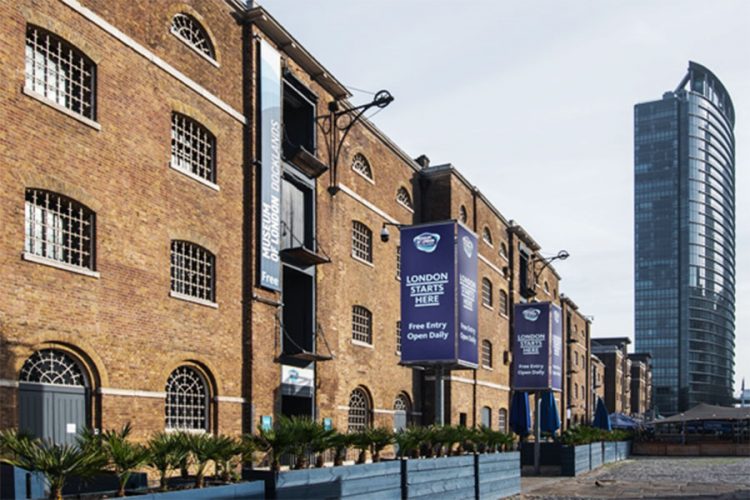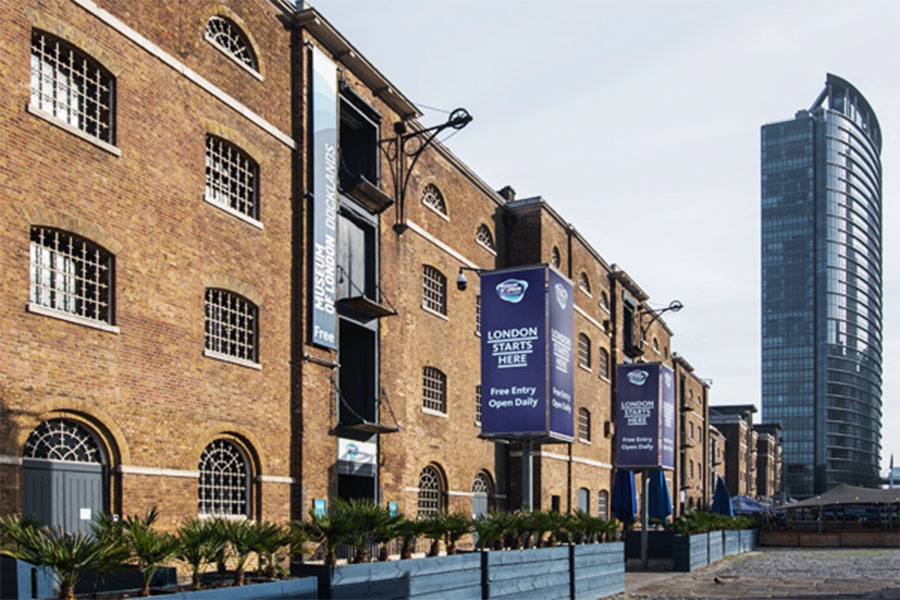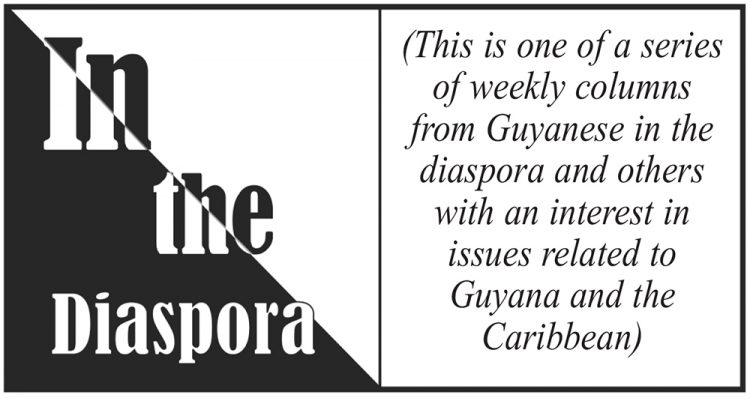Shereen Lafhaj is a Curator currently working at the Museum of London in the UK. She is the Lead Curator of ‘Indo + Caribbean: The creation of a culture’ at the Museum of London Docklands.

The idea for the display arose from a public call-out. Temporary displays, produced with Londoners, are a staple of the Museum’s programming. A proposal to create a display on the topic of Indian indenture was submitted by Makiya Davis-Bramble, a Londoner of mixed Caribbean heritage who has recently embarked on a PhD in Caribbean History. She wanted to see the diversity of the Caribbean better reflected in the Museum’s galleries. Whilst a small section on indenture does exist, it is far from a deep dive into the topic.
The history of Indian indenture isn’t widely known in the UK today. Whilst there are myriad reasons for this, a root cause is that education on this subject isn’t a compulsory part of the school curriculum in Britain. The experiences shared by our Indo-Caribbean partners who contributed to the project are testament to this. They recounted endless stories of having their identities misrepresented or unrecognised. Anecdotes such as having to explain that their heritage was in ‘Guyana not Ghana’ abounded. As a museum, we have an opportunity to help amplify important histories and our hope was that, through this display, we could do just that.
One of the early challenges in the creation of the display was how to tackle such an immense history in a small space. The temporary display area is made up of only one large wall roughly 7 meters long and 2 smaller side walls. Therefore, whilst the display acknowledges in its introduction the breadth of indenture history, it also highlights that we provide an overview of Indian indenture with a focus on eight countries that were part of the British Caribbean and which operated Indian indenture systems: Guyana, Trinidad and Tobago, Jamaica, St Vincent and the Grenadines, St Lucia, Grenada, St Kitts and Nevis, and Belize. This also tethers the display to the Museum’s requirement to tell stories with a connection to London.
A number of partners participated in this display, including University of Sheffield Academic Dr. Saurabh Mishra, and Londoners of Indo-Caribbean descent who have provided feedback and contributed to the final section on London’s present day Indo-Caribbean community. This section begins with a short film recorded at the Museum of London Docklands, in which three of our community partners discuss questions such as ‘what does London mean to you’ and ‘how do you feel about the indenture and migration stories in your family’ over doubles and pholourie. The section also includes family memorabilia from the partners alongside their commentary. It is an important reminder for visitors that the history of Indian indenture has legacies stretching into the present day and that the city they live in has been shaped by its Indo-Caribbean community.
As a museum that focuses on London life, we didn’t expect to find much in the museum’s existing collection to support the display. However, a deep dive into the archive uncovered a few items that hit upon essential aspects of the Indian indenture story. The first was a sample of sugar extracted in Guyana at the beginning of the 20th century. This date meant that the sugar was likely produced through the labour of Indian indentured workers. Due to the centrality of sugar to the Indian indenture story, as the main product being produced and a key impetus for its development, this was a real find. It is physically located at the centre of the display as a focal point that visitors can consistently return to when sugar is mentioned.
Another item discovered in the Museum’s collections was a photograph of a James Nourse Ltd. indenture ship called the Chenab, anchored at West India Docks. From the outset, we knew we wanted to include a focus on the journey across the Kala Pani on ships such as this one. The photograph is particularly pertinent as it was taken where the Museum of London Docklands is currently situated, and so viewers have the layered experience of seeing the photograph and understanding that they stood near its location. Further research revealed a connected object, the logbook of James Nourse Ltd., which we were able to borrow from the National Maritime Museum for the display. Placed next to each other, with the logbook open at a page mentioning the Chenab, these items allow visitors to see both what an indenture ship looked like and how the journeys of such ships were recorded.
These objects are now part of the display alongside a wide range of other items including an indenture contract on loan from The National Archives, images from early 20th century Trinidad, and the London bus driver badge that belonged to Salina Jane, the uncle of our Community Partner. A key goal of the display was to try and draw out, where possible, the voices and experiences of Indian indentured labourers. This was achieved through the inclusion of elements such as an audio interactive in which visitors listen to extracts from an article by Dr. Mishra examining the actual experiences of Indian migrants on board indenture ships.
It has been encouraging to see the positive responses the display has received so far, both from those with deep connections to this history and those who had never heard of it before. Since the opening of the display, the Museum has been promoting awareness of the history. Examples of this work include interviews with the BBC that have spotlighted the display and the voices of our Indo-Caribbean partners, and deep-dive articles on the Museum of London’s Discover page.
Having spent time in the galleries meeting visitors, a particular favourite reaction of mine has been to our community partner Salina Jane’s artwork. Her pieces revolve around her family’s double diaspora journey, and many visitors have commented that they are reminded of the migration stories in their own families.
It is an exciting time for projects on Indian indenture in Britain. During the course of the display we connected with many institutions and individuals who have been working to bring more attention to the topic and we hope that our display will inspire visitors to engage with it further. Visitors are able to leave our display with a free booklet, created with Dr. Mishra, that not only provides more insight into elements of the display that could only be covered briefly in the space but signposts resources for further exploration of Indian indenture. This ends the display on its key message – that we all need to continue to learn more about this underrepresented, impactful, and fascinating history.
To See Salina Jane’s work see: https://www.salinajaneart.com/
For the Museum of London’s Discover page see: https://www.museumoflondon.org.uk/discover






